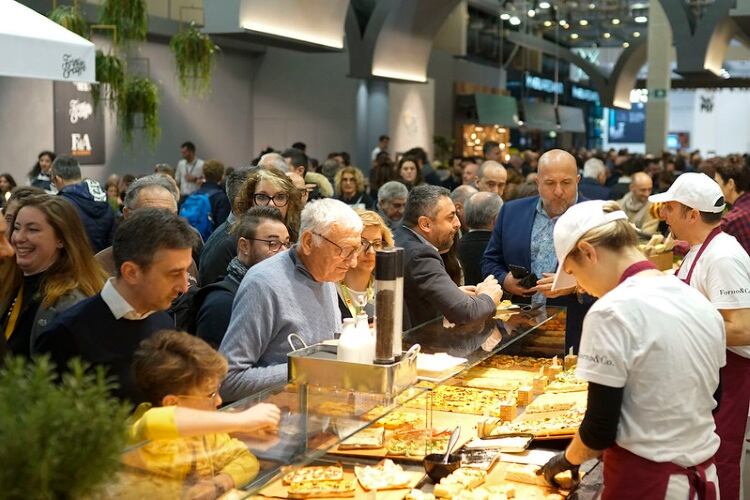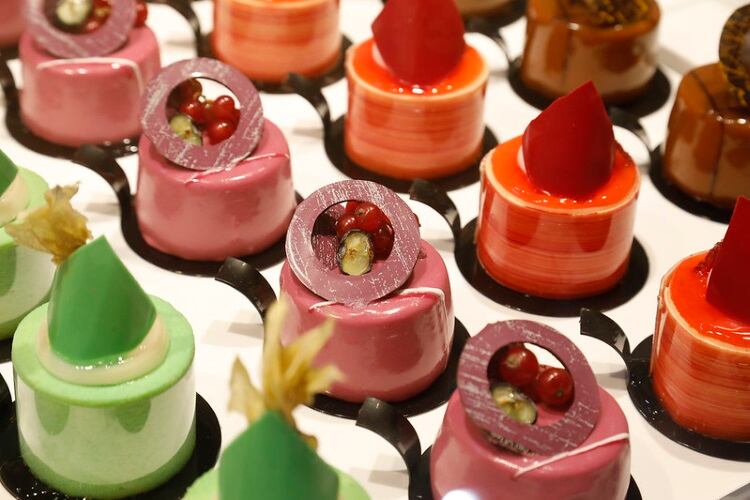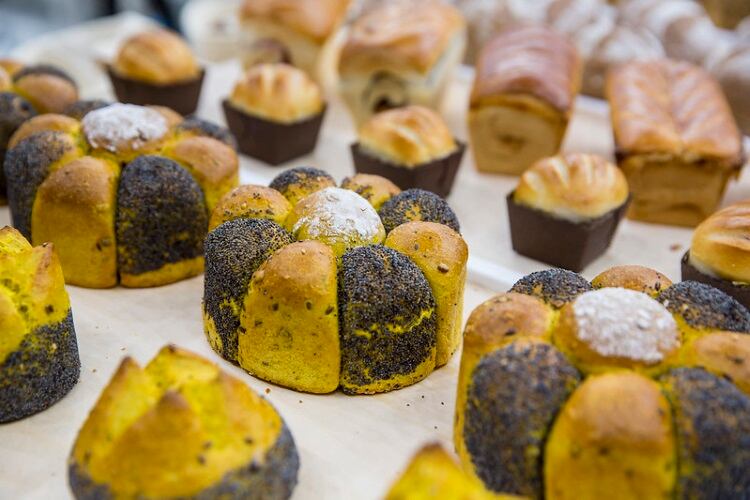The 129,000m2 showcase of the latest innovation in the global market for Artisan Gelato, Pastry, Chocolate, Bakery and Coffee – now in its 41st edition – has blossomed from a little B2B trade show to a 1,250 exhibitor setup drawing more than 200,000 of visitors from all four corners of the globe.
According to post-show data, among that swathe of visitors were 33,000 buyers from 187 countries – led by Spain, Germany and France, but also numerous countries from Asia and the Americas.
A.B. Tech Expo – showcasing technology and products for bakery, pastry and confectionery, which ran alongside of Sigep – posted equally impressive figures.
The two expos were inaugurated by Dario Franceschini, Italy’s Minister for Cultural Assets, Activities and Tourism, confirming their role as a driving force in defining the sector’s trends.
The timeless search for love and happiness
This year is the centenary of the birth of Federico Fellini, acclaimed director of well-known films like La Dolce Vita, 8½ and Nights of Cabiria.
To mark his birth, the Municipality of Rimini is staging ´Fellini100´ across the country until April, before the exhibition spreads its wings to Los Angeles, Moscow and Berlin. Sigep also played its part in celebrating the Rimini-born maestro, with its own exhibition of unreleased images, photographs and videos of Fellini and his films.
On show (and seen in the above video) was a gigantic cake – nine feet high and trifle-flavoured (Fellini’s favourite dessert) – prepared by the Academy of Italian Master Pastry Chefs.
“We see the development of Sigep as a reflection of what is going on in the market and we’re also proud to say that we anticipate these trends,” Flavia Morelli, group brand manager of Italian Exhibition Group’s Food & Beverage division, organisers of Sigep, told BakeryandSnacks.
Like elsewhere, the biggest trend in the Italian bakery sector is ‘being good to yourself – without losing sight of indulgence – and the environment’.

The rise of the plant-based movement, the push for personalisation and premiumisation, and the demand for more convenience, more variety and a bigger taste punch are also top of mind of producers wanting to resonate with consumers.
“Italian companies are following these latest trends of consumers, who want an authentic product … there is also a bigger attention on the ingredients, to use natural products,” said Morelli.
She noted that, in the past year, IEG has noticed a growing synergy between what, in the past, were the separate sectors of pastry and gelato.
“The bakery sector is now very merged with other sectors, with coffee, with gelato, with pastry …
“We also see on the Italian market there is an evolution … in a bakery shop, not only can you buy your bread, but you can have coffee, you can have a quick lunch … so they have enlarged their business in order to capture the attention of the consumer.
“Companies are used to this and, for example, the leading companies producing machines for the production of gelato … sell their machines not only to the gelato shop, but also to bakers.”
The next edition of Sigep will be held at Rimini from January 16-20, 2021.
A snapshot of Italy’s ‘sweet’ spot

The artisanal sector – comprising bakery, pastry, confectionery, chocolates and gelato – was valued over €20bn in 2018, a turnover brought in by the sector’s 31,652 enterprises, employing a workforce of over 170k people, according to data from Confartigianato Impresse, the largest European network to represent the artisanal sector.
In 2018, Italy was Europe’s fifth largest exporter of artisanal confectionery, tipped at €4.3bn , an increase of 2.2% on 2017 figures. On the other hand, there was a 2.4% drop in imports.
The main consumers of Italian-made fresh pastry products are the French (€218m), Germans (€191m), Americans (€110m) and the British (€94m).
Top in the ranking of pastry exporters are Milan, Parma, Treviso, Naples and Bolzano.
Getting down to business
The demand for traditional bakery goods is constantly increasing, with panettone – a type of sweet bread – topping the list.
Artisanal panettone is gradually winning over a greater share of the market from those mass produced, reaching 5,000 tons in 2018 (18% of the overall market).
A survey on Italian’s consumption habits of panettone – carried out by CSM Bakery Solutions in collaboration with Nielsen – found that, of the 12 million families who habitually eat panettone, over two million – particularly those aged between 30 and 44 years – preference artisan products.
Christmas is certified the time of ‘panettone business’, accounting for over a third of the period’s takings and a 10th of the whole year – approximately €60m in 2018, according to the Chamber of Commerce of Milan. In December, pastry shops and bakeries typically sell between 10-30 panettones per day.
Sorting the wheat from the chaff

In 2018, the turnover of Italy´s overall flour milling industry was valued at more than €3.5bn, a 2.1% increase from the year prior, according to Italmopa, a trade association that represents Italy’s milling industry.
The country currently has 358 flour mills in activity, which processed 7,778,500 tons of wheat that year, of which the majority was soft wheat , followed by durum wheat.
There was a positive trend in exports from the year prior, increasing by 9.82%.
However, the production of bread and bread substitutes – like crackers, savoury biscuits, frisellas and breadsticks – dropped by 1.25%, compared to 2017. In particular, the drop concerned bread made from white flour, aligned with the increasing trend towards healthier products.
On the other hand, there was an increase in the demand for flour for savoury bakery (4.21%) and biscuits (2.6%). Also on the rise was the demand for flour for pizza (1.62%) and pasta (1.15%).
Wheat flour is slowly giving way to alternative flours for use by home bakers.

